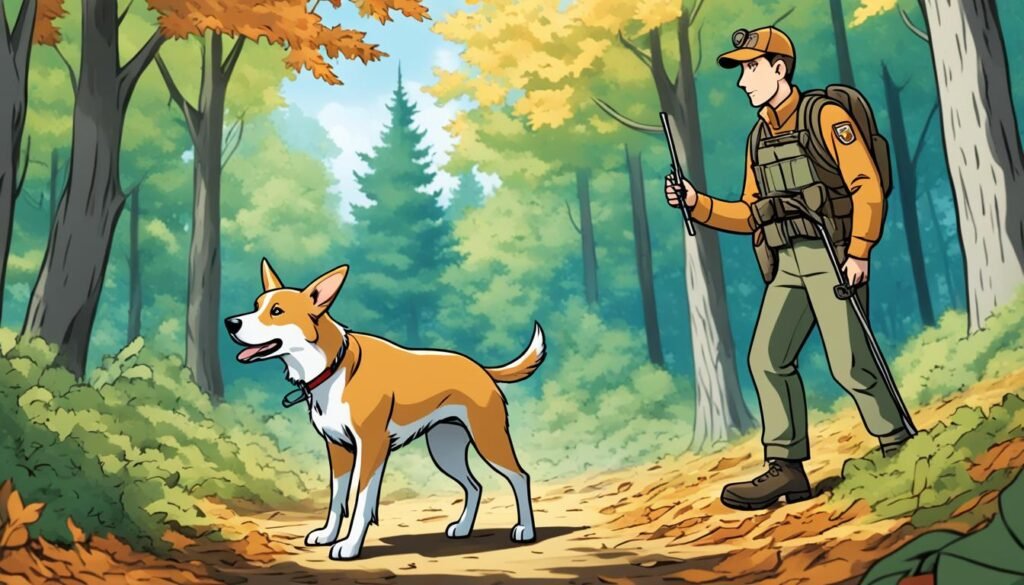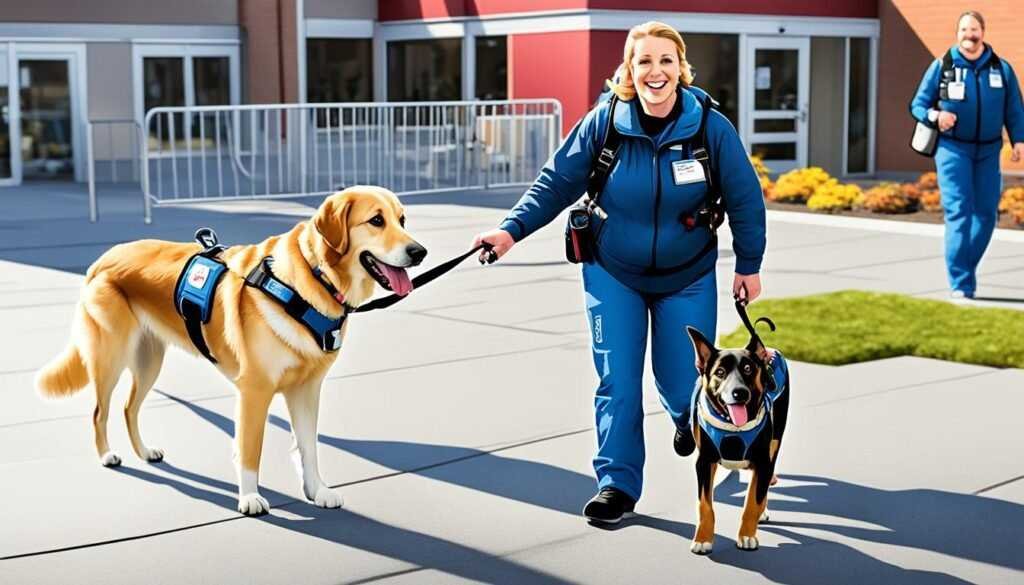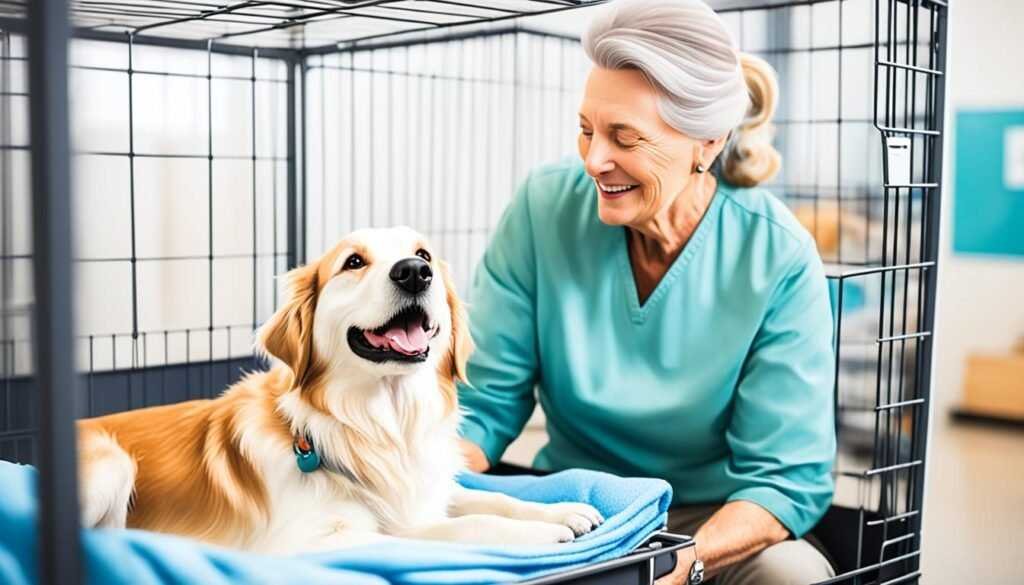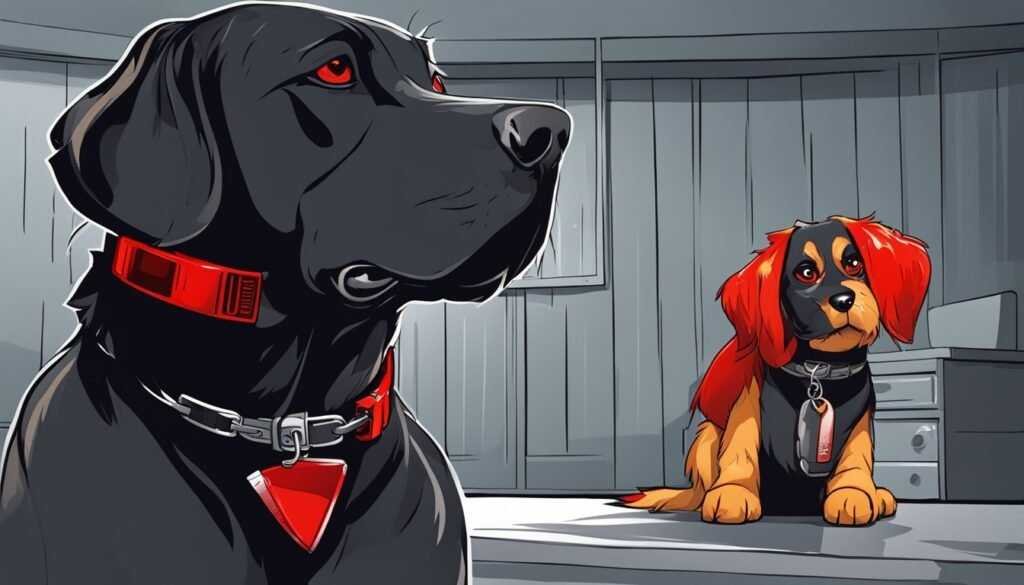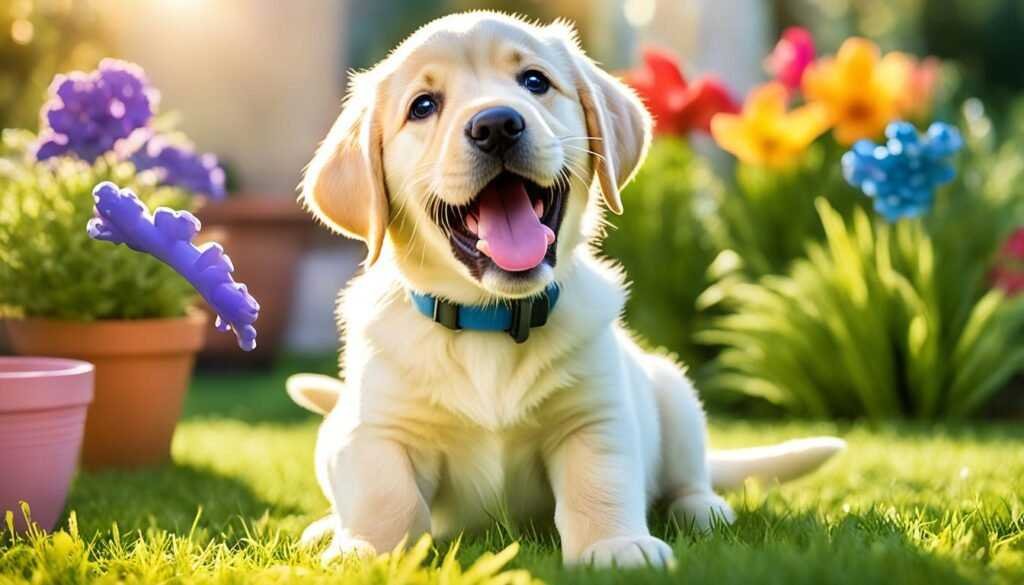- Establish a Routine for Potty Breaks
- How To Train a Dog To Pee Outside
- Using Positive Reinforcement Techniques
- Crate Training for Potty Training
- Managing and Preventing Accidents
- Conclusion
- FAQ
- How can I establish a routine for potty breaks when house training my dog?
- What are the key elements for teaching my dog to pee outside?
- How can I use positive reinforcement techniques for house training my dog?
- How do I properly use crate training for potty training my dog?
- How should I handle and prevent accidents during the house training process?
House training your dog or puppy needs patience, commitment, and consistency. Accidents will happen, but with these guidelines, you can help your new pet learn. The aim of training your dog to pee outside might seem easy, but it can be tough.
Yet, with the right methods and steady effort, you can teach your dog to go potty where they should.
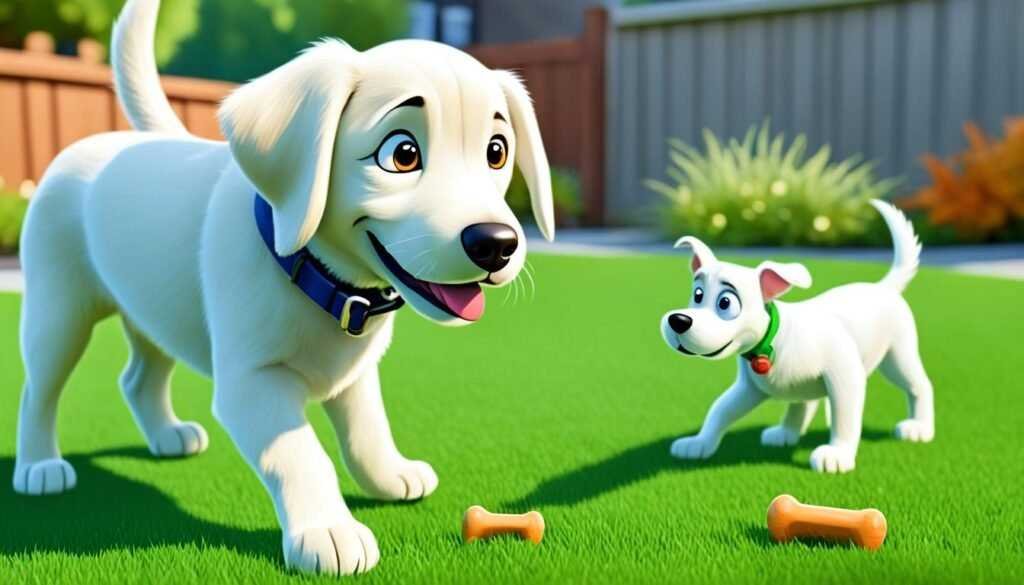
Establish a Routine for Potty Breaks
Creating a regular potty training routine is key for potty training puppies. Puppies can hold their bladder for one hour for each month of age. So, a 2-month-old puppy can hold it for about 2 hours. To house train your pup, take them out often, at least every two hours.
Pick a spot outside for your puppy to go potty and take them there on a leash. This links that spot with where they should go. After they go potty there, praise and reward them with treats. This will encourage them to go potty there again.
Feeding Schedule and Potty Breaks
Put your puppy on a regular feeding schedule. This means what they eat on a schedule comes out on a schedule too. Most puppies eat three to four meals a day when they’re growing. Linking their meals with potty breaks helps you know when they’ll need to go and stops accidents.
The month-plus-one rule is a good guide. A 3-month-old puppy can hold it for 4 hours. By 6 months, a puppy can usually go potty outside if trained early.
| Potty Break Timing | Frequency |
|---|---|
| After naps or sleeping | Dogs need to go outside after any period of sleep lasting more than 15 minutes. |
| After eating | Dogs need to go outside after meals. |
| After drinking | Dogs need to go outside after drinking water. |
| After a play session | Dogs need to go outside after engaging in play. |
| After a training session | Dogs should be taken outside after training activities. |
By having a consistent puppy potty schedule and taking your pup out often, you’ll help them succeed in potty training puppies. You’ll also help build good puppy bathroom habits.
How To Train a Dog To Pee Outside
Teaching your dog to pee outside involves three main steps: spending quality time together, using crate training, and sticking to a schedule. These steps help create a strong bond and routine, making house training successful.
Spend Quality Time with Your Dog
Adult dogs can bond with you just like puppies, making it easier to train them. If an older dog isn’t trained, it might be due to lack of training, living outdoors, or certain habits. Adult dogs can hold their bladder for hours, making training easier than with puppies.
Embrace Crate Training
Crate training is a great method because dogs don’t like to soil their den. It’s a good way to train adult dogs. Start by introducing the crate slowly and feed your dog in it to make it a safe spot.
Follow a Consistent Potty Schedule
Having a regular potty schedule helps your dog learn when to go outside. This routine is key for training adult dogs. Take your dog out often, like in the morning, after meals, and before sleep, to help them learn.

“Potty training a dog can take as little as seven days with dedication, consistency, and discipline.”
Using Positive Reinforcement Techniques
Positive reinforcement is key for teaching your dog to pee outside. Begin by linking a command, like “go potty,” with the act of peeing. When your dog pees in the right spot, praise and give them treats right away. This approach helps your dog learn and remember the right behavior.
Use a Verbal Cue or Command
Creating a consistent command, like “go potty,” helps your dog know when it’s time to go. Use this cue every time you take your dog outside. Soon, they’ll link the command with peeing.
Praise and Treat Your Dog for Going Potty Outside
Positive reinforcement is vital for potty training. When your dog pees outside, praise them and give a treat. This makes them want to pee outside more often.
Remember, being consistent and patient is key in potty training. With positive reinforcement and a routine, your dog will learn to pee outside fast and have fewer accidents inside.

“Positive reinforcement is the most effective way to train your dog. Rewarding good behavior encourages them to repeat it.”
Crate Training for Potty Training
Crate training is a great way to help your dog learn to go potty outside. When picking a crate, make sure it’s big enough for your dog to stand, turn around, and lie down. This size helps prevent your dog from using the crate as a bathroom spot.
Start by letting your dog explore the crate on their own. Give them treats and praise when they go inside. Then, slowly increase how long they stay in the crate, making it a positive place.
Feeding your dog in the crate also helps them see it as a good spot. This method teaches your dog not to go potty in their crate. With time and consistency, your dog will learn to wait until you take them outside.
| Crate Type | Advantages | Disadvantages |
|---|---|---|
| Wire Crates | Steady airflow, allow visibility | May not match home decor |
| Furniture Crates | Aesthetic appearance | Less airflow, heavier |
| Soft Crates | Lightweight, travel-friendly | Can retain smells and stains |
To successfully crate train your dog, introduce the crate slowly. Feed your dog in it and make it a safe, positive space. With the right crate size and consistent training, you’ll see house training progress.
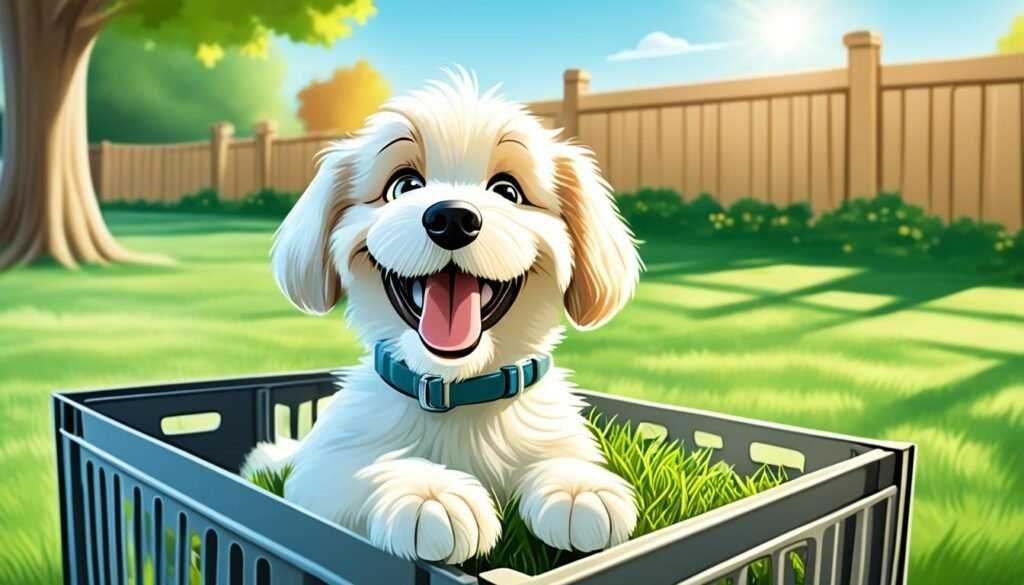
Managing and Preventing Accidents
Accidents happen when house training your dog. Don’t punish your dog for these mishaps. If you see your dog having an accident inside, make a sudden noise to stop them. Then, quickly take them to where they should go to the bathroom.
It’s vital to clean up accidents well with an enzymatic cleaner. This type of cleaner gets rid of smells and stops your dog from going back to the same spot. Dogs often go back to where they’ve peed or pooped before, so cleaning well is key to stopping more accidents.
Interrupt Indoor Accidents
If you see your dog about to have an accident inside, make a loud noise to stop them. This could be clapping your hands or saying “Ah-ah!” Then, take them right outside to where they should go to the bathroom. Give them a treat and praise when they do their business outside.
Clean Accidents Thoroughly
Use an enzymatic cleaner to get rid of pet smells. This cleaner breaks down and removes smells that might draw your dog back to the same spot. Make sure to clean every part of the area, including hard spots to reach.
Managing and preventing accidents is important for successful house training. By stopping accidents and cleaning up well, you help your dog learn the right behavior. This keeps them on track with their outdoor potty training.
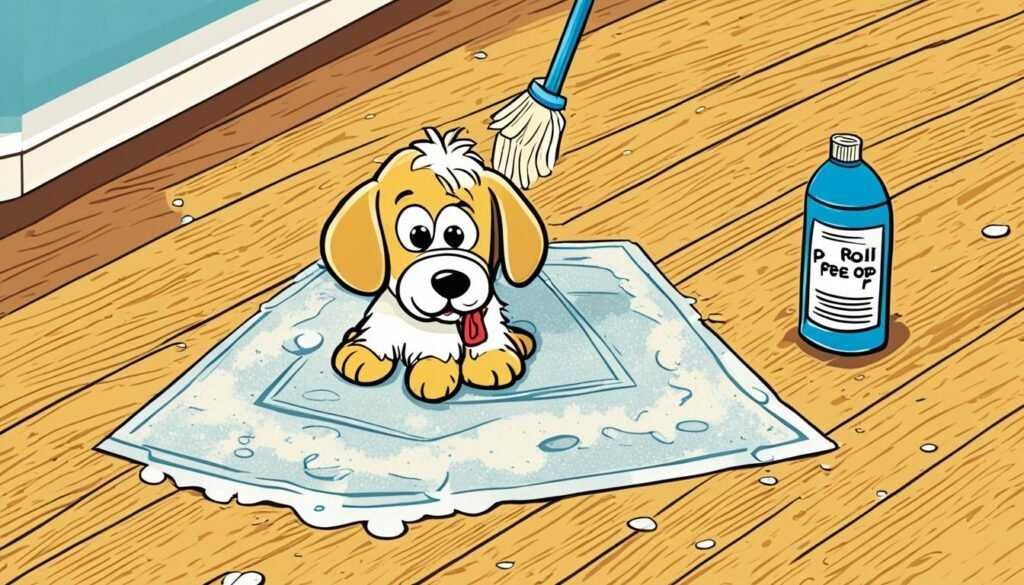
Conclusion
Training your dog to pee outside needs patience, consistency, and positive rewards. Create a routine, use crate training, and praise good behavior. This helps your dog learn to go to the right spot outside. If they have accidents, handle it gently, don’t punish them, and keep up the good habits.
With hard work and the right methods, your dog will learn to go outside when they need to. Use dog housebreaking tips, follow puppy potty training summary steps, and aim for successful outdoor dog potty training. These steps will help you train a dog that knows where to go when nature calls.
Potty training takes time and patience, but it’s worth it for a clean, well-behaved dog. Stick to a routine, reward good behavior, and watch out for accidents. With steady effort and care, your dog will soon go to the right spot outside without a problem.
FAQ
How can I establish a routine for potty breaks when house training my dog?
Creating a routine is key for house training success. Take your puppy out often, at least every two hours. Also, after waking up, playing, eating, or drinking. Choose a specific spot outside for bathroom breaks and use a leash to keep your puppy there.
Reward your puppy right after they go potty outside with praise and treats. Keep your puppy on a regular feeding schedule. This helps with their bathroom schedule too.
What are the key elements for teaching my dog to pee outside?
Teaching your dog to pee outside needs three main elements: quality time, crate training, and a consistent potty schedule. Bonding with your dog and setting a routine helps a lot. Crate training works well since dogs don’t like to soil their den.
Stick to a regular potty schedule with frequent outdoor trips. This helps your dog learn the right behavior.
How can I use positive reinforcement techniques for house training my dog?
Positive reinforcement is key for house training. Start by using a command like “go potty” when your dog goes outside. Praise and reward them with treats every time they go in the right spot.
This approach helps your dog learn and remember the right behavior.
How do I properly use crate training for potty training my dog?
Crate training is a great way to house train your dog. Pick a crate that lets your dog stand, turn around, and lie down comfortably. Introduce the crate slowly, rewarding your dog for checking it out.
Feed your dog in the crate to make it a positive place. Crate training helps your dog avoid soiling their space, promoting good potty habits.
How should I handle and prevent accidents during the house training process?
Accidents happen when house training, and it’s important not to scold your dog. If you see your dog having an accident, interrupt them with a loud noise and take them outside right away.
Clean up any mess well with an enzymatic cleaner to remove smells and stop your dog from going back there. Stay patient and use positive reinforcement to prevent more accidents and keep your dog on track with their training.

